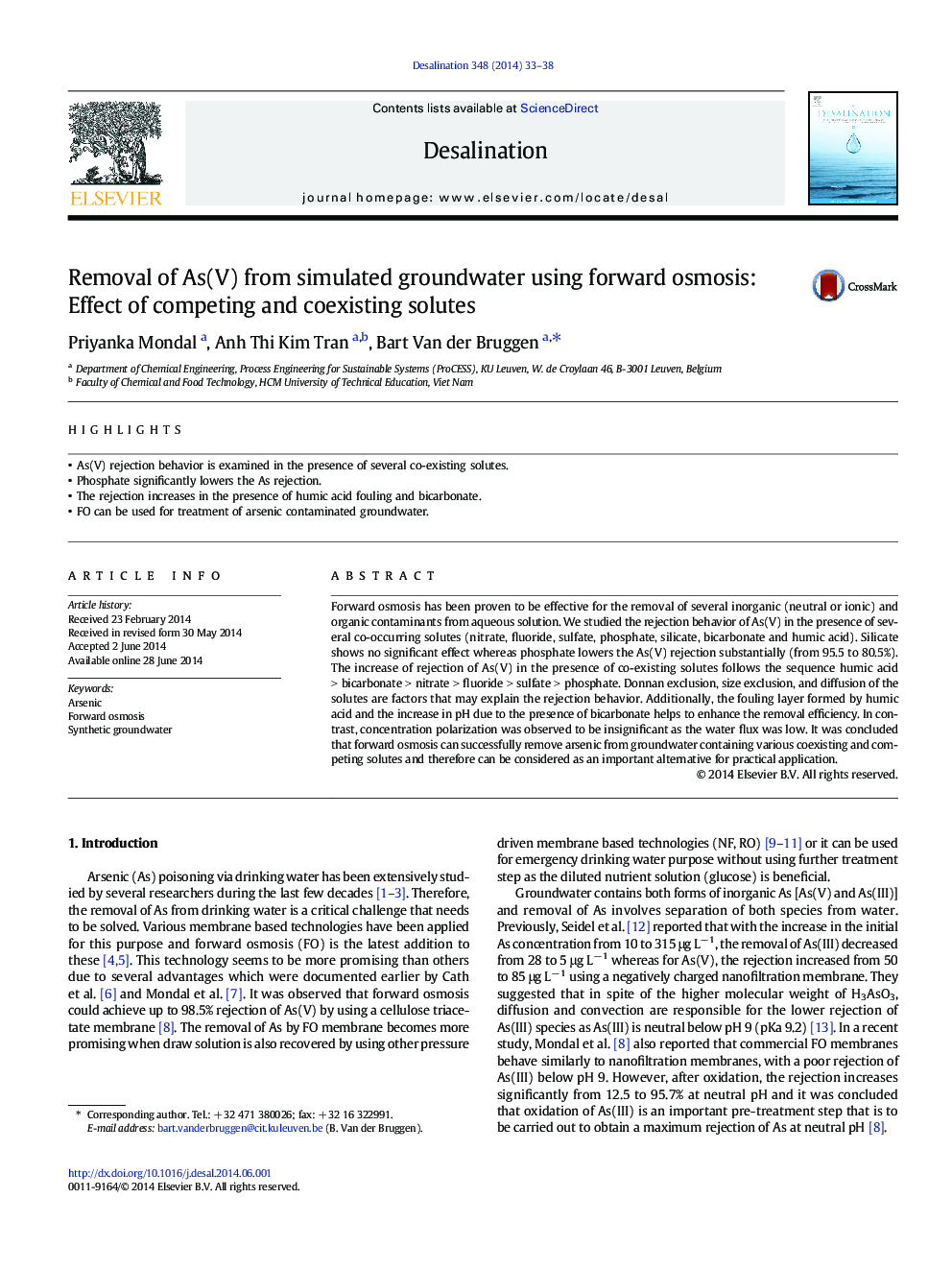| Article ID | Journal | Published Year | Pages | File Type |
|---|---|---|---|---|
| 623509 | Desalination | 2014 | 6 Pages |
•As(V) rejection behavior is examined in the presence of several co-existing solutes.•Phosphate significantly lowers the As rejection.•The rejection increases in the presence of humic acid fouling and bicarbonate.•FO can be used for treatment of arsenic contaminated groundwater.
Forward osmosis has been proven to be effective for the removal of several inorganic (neutral or ionic) and organic contaminants from aqueous solution. We studied the rejection behavior of As(V) in the presence of several co-occurring solutes (nitrate, fluoride, sulfate, phosphate, silicate, bicarbonate and humic acid). Silicate shows no significant effect whereas phosphate lowers the As(V) rejection substantially (from 95.5 to 80.5%). The increase of rejection of As(V) in the presence of co-existing solutes follows the sequence humic acid > bicarbonate > nitrate > fluoride > sulfate > phosphate. Donnan exclusion, size exclusion, and diffusion of the solutes are factors that may explain the rejection behavior. Additionally, the fouling layer formed by humic acid and the increase in pH due to the presence of bicarbonate helps to enhance the removal efficiency. In contrast, concentration polarization was observed to be insignificant as the water flux was low. It was concluded that forward osmosis can successfully remove arsenic from groundwater containing various coexisting and competing solutes and therefore can be considered as an important alternative for practical application.
